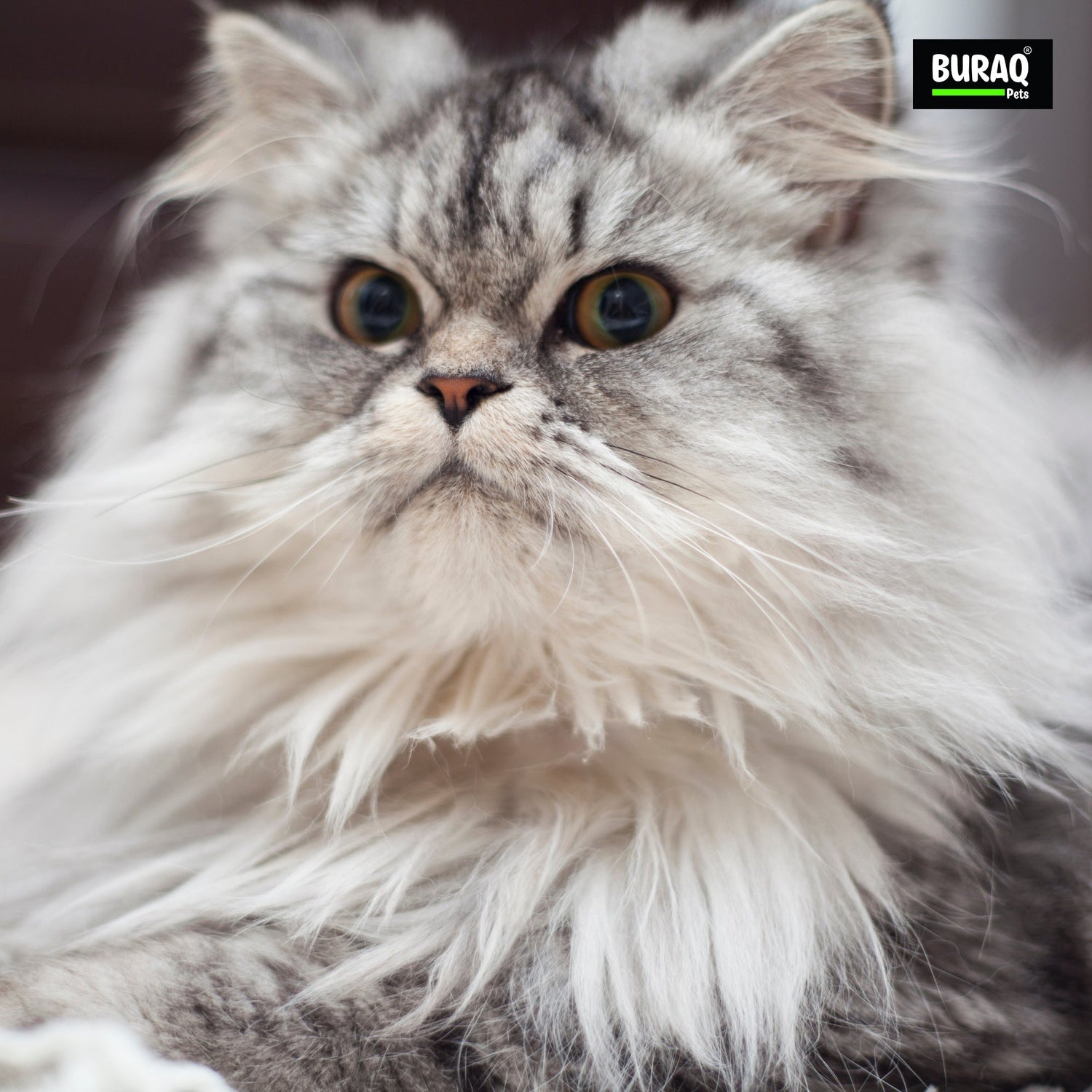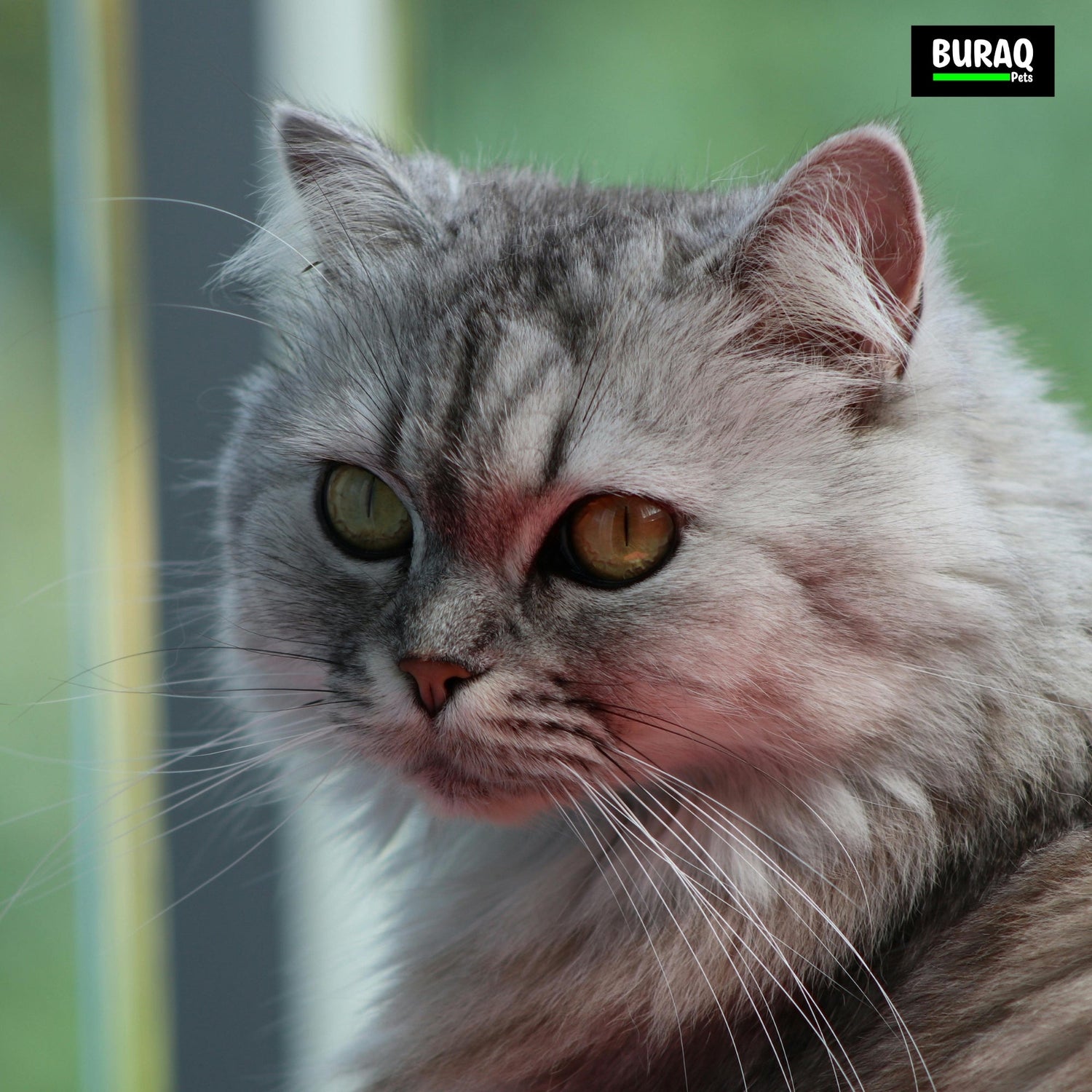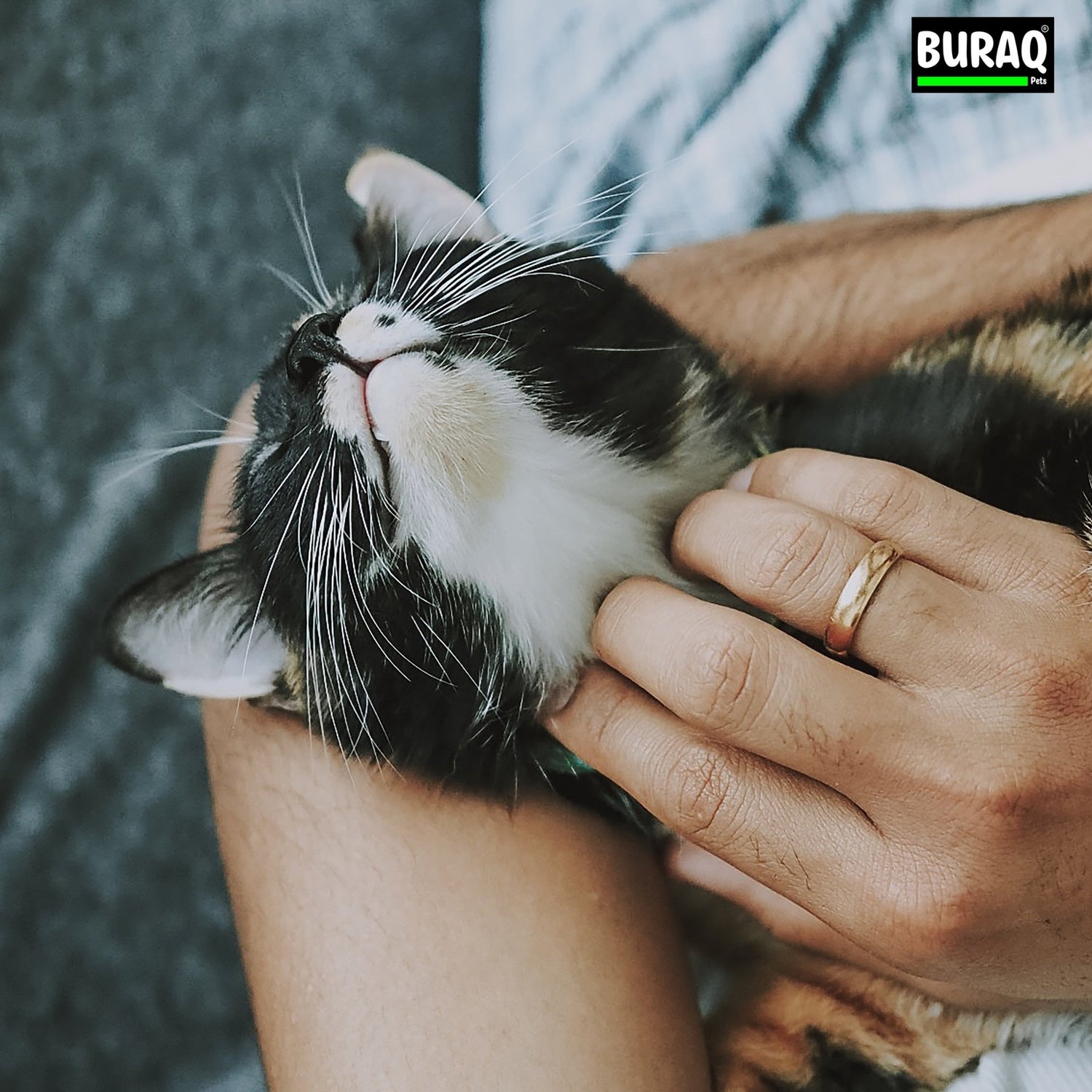
Struggling with cat fur care in India? You’re not alone. A whopping 85% of long-haired cat owners report dealing with matted fur issues at least once a month.
Unfortunately, those innocent-looking tangles are more than just an aesthetic problem. Matted fur can cause significant discomfort for your feline friend, leading to skin irritation, infections, and even restricted movement. Many cat parents attempt to detangle cat fur naturally but end up frustrated when their efforts fail.
The good news? With the right cat grooming tips and techniques, you can effectively tackle even stubborn mats at home. Whether you’re dealing with a luxurious Persian, a fluffy Himalayan, or any other breed prone to matting, this guide will walk you through exactly how to remove matted cat hair safely and effectively.
From understanding the root causes of matting to learning practical solutions that work specifically for cats in India’s climate, we’ve got you covered. Let’s transform those uncomfortable tangles into a soft, healthy coat your cat will thank you for!
What Causes Matted Cat Hair?
Many cat owners in India notice matted fur appearing seemingly overnight. These tangled clumps form for several interconnected reasons, and understanding them is the first step toward effective cat fur care.
Lack of regular grooming
Despite cats’ reputation as meticulous self-groomers, they often need human assistance with coat maintenance. Long-haired breeds particularly struggle as they have more fur to manage. Places where movement frequently occurs—around the collar, under the chest, and between the legs—become especially prone to matting if not properly maintained. Furthermore, cats with thick undercoats face greater challenges since this layer can accumulate excess fur if not brushed regularly.
Poor diet and hydration
Your cat’s nutrition directly impacts fur health. A low-quality diet can result in dry, brittle fur that tangles easily. Essential fatty acids (including omega-3 and omega-6) help maintain skin integrity and contribute to healthy hair growth. Since cats cannot synthesize these nutrients internally, they must obtain them through diet. A deficiency often leads to matted or discolored hair and scaly skin.
Additionally, proper protein levels are crucial—adult cats require 30-45% protein on a dry matter basis, while kittens need 35-50%. Without adequate nutrition, cats may develop areas of hair loss or fur that becomes dry and brittle, making it more susceptible to matting.
Obesity and limited mobility
Overweight cats face significant grooming challenges. The excess weight restricts their ability to reach certain body areas, particularly the back, hips, and base of the tail. Studies show that obese cats are almost five times more likely to develop skin problems, including matting. Consequently, these cats often develop oily patches in hard-to-reach areas, which eventually lead to tangling.
The problem is widespread—most cases of obesity in cats appear in populations aged 5-11 years, though indoor cats may develop weight issues as early as 12-13 months.
Health issues like arthritis or dental pain
As cats age, their mobility decreases, making it increasingly difficult to groom effectively. More than 90% of cats over 12 years old suffer from arthritis or degenerative joint disease, significantly impacting their grooming ability. Moreover, dental health issues make using their mouths for grooming painful. Other health conditions that may contribute to matted fur include:
- Kidney disease
- Diabetes mellitus
- Age-related illnesses
If you notice sudden changes in grooming behavior lasting more than a few days, it might indicate an underlying health issue requiring veterinary attention.
Outdoor exposure and environmental dirt
Environmental elements play a significant role in cat matting problems. Cats who venture outdoors or live in dusty areas are more prone to matting. During humid conditions, a cat’s undercoat cannot expand and relax properly, increasing the likelihood of tangling. Additionally, exposure to dirt, dust, and pollen creates a perfect environment for mats to form.
Understanding these causes is essential for developing an effective approach to cat fur care in India, where climate conditions can exacerbate matting issues.
Why Matted Fur is a Serious Problem
Beyond merely appearing unkempt, matted fur poses serious health risks for your feline companion. What might start as a small tangle can quickly escalate into a painful condition requiring immediate attention. Let’s examine why addressing cat matting problems promptly is crucial for your pet’s wellbeing.
Skin irritation and infections
Matted fur pulls constantly on your cat’s skin, creating inflammation and tender areas that become increasingly painful over time. This continuous tugging can lead to bruising and fragile skin underneath the mats. As the skin becomes irritated, it creates an ideal environment for bacterial growth.
The affected areas often develop painful sores, hot spots, rashes, and even open wounds that can become infected. Once an infection takes hold, you might notice redness, an unpleasant odor, or your cat exhibiting signs of discomfort. Without proper treatment, these infections can migrate deeper into tissues, causing worsening symptoms and greater discomfort.
Restricted movement and discomfort
Tightly matted fur significantly impairs your cat’s mobility. As clumps grow larger and tighter, they put pressure on the skin, making it painful for your cat to lie down. Long-haired cats face particular challenges as the matted fur restricts their ability to walk, stretch, or sit properly.
This limited mobility becomes even more problematic for senior or arthritic cats already dealing with stiff joints. Many cats hide their discomfort instinctively, making it difficult to recognize when they’re suffering. However, if you notice changes in movement patterns or reluctance to jump or play, matted fur might be causing significant pain.
Trapped dirt and bacteria
One of the most concerning aspects of matted fur is how it prevents oxygen and moisture from reaching the skin properly. This creates a warm, moist environment that traps dirt, oils, and bacteria against the skin.
Subsequently, the skin becomes dry, scaly, and irritated due to poor ventilation. Even more alarming, mats near the back legs can trap urine and feces, leading to severe infections. These tangled areas also become perfect hiding spots for parasites like fleas, ticks, and mites, which can cause additional health problems.
Pain during self-grooming
Cats are meticulous self-groomers by nature. However, matted fur makes this essential activity painful. When attempting to groom matted areas, cats often experience significant discomfort as the mats pull on their sensitive skin.
Accordingly, many cats will abandon grooming altogether when mats become too painful. This creates a dangerous cycle—reduced grooming leads to more matting, which causes more pain, resulting in even less grooming. Over time, mats become itchier and hotter on the skin, further aggravating the condition.
For cat fur care in India, recognizing these serious implications of matted fur helps emphasize the importance of regular grooming. The hot, humid climate in many parts of India can exacerbate matting issues, making preventive care and early intervention essential for maintaining your cat’s health and comfort.
How to Fix Matted Cat Hair at Home
Removing mats from your cat’s fur becomes manageable with the right approach and tools. Before beginning, ensure your cat is calm and relaxed—never start grooming during playtime or when your cat seems agitated. A patient, gentle approach yields better results and creates a positive experience for your feline friend.
Start with gentle brushing from the tips
Initially, try working through small mats with your fingers if your cat tolerates it. Hold the base of the hair close to the skin with one hand to prevent pulling, which can be painful for your cat. Begin brushing at the tips of the hair, gradually working your way toward the skin. This method mirrors how cats naturally groom themselves and prevents unnecessary discomfort.
For maximum effectiveness, separate one mat at a time with your fingers before attempting to brush through it. Remember that matted areas are often sensitive, primarily in hard-to-reach spots like under the legs or near the rear.

Use a wide-tooth comb or dematting tool
For thicker mats, a fine-tooth metal comb works well for short-haired cats, whereas long-haired cats benefit from a wide-tooth comb. Metal combs with curved tines effectively dislodge mats with minimal pulling.
When using a dematting tool, employ short strokes rather than long, pulling motions. The Chris Christensen’s Cat/Carding Buttercomb #013 excels at digging into mats and untangling trapped fur. Alternatively, consider a two-sided tool with both dematting and deshedding functions to prevent new mats from forming.
Apply detangling spray if needed
For stubborn mats, a detangling spray can be invaluable. Apply the spray to the affected area and allow it to sit for 10-15 minutes before attempting to comb through the mat. This helps penetrate the strands and release tangles, making the process easier.
Essentially, these products help loosen tight knots without excessive pulling or discomfort. Always ensure any product used is cat-safe, as your pet will likely groom the area afterward.
Trim stubborn mats carefully with pet scissors
In cases where brushing and detangling sprays prove ineffective, trimming might be necessary. Never use regular scissors as this can lead to accidental skin lacerations. Instead, opt for pet-specific clippers or grooming scissors designed for cats.
When trimming is necessary, carefully slide blunt-end scissors along the skin into the mat, holding them perpendicular to the skin with the bottom blade sliding along the skin. Cut upward into the mat rather than across it. Electric pet clippers often provide a safer alternative to scissors.
Avoid pulling or tugging the fur
Throughout the entire process, refrain from pulling or tugging on your cat’s fur. Matting causes hair to pull at the skin, which is painful and can lead to skin irritation or worse.
Hold the base of the mat with your fingers before brushing to control resistance and prevent skin pulling. Use short, gentle strokes rather than forceful movements. If your cat becomes agitated, take a break, offer treats, and resume later.
For severely matted cats in India, professional help might be necessary. Otherwise, consistent grooming with the right tools will keep your cat’s coat healthy and mat-free.
When to Consider Shaving or Professional Help
Sometimes even the most dedicated cat parents reach a point where professional help becomes necessary. While home grooming works for mild matting, recognizing when to seek expert assistance is crucial for your cat’s health and comfort.
Signs that mats are too tight or painful
Watch for these warning signals that indicate mats require professional attention:
- Your cat shows pain when the area is touched, including hissing or aggressive behavior
- Mats are tight against the skin and immovable when gently pulled
- Redness, inflammation, or sores appear under or around matted areas
- There’s an unpleasant odor coming from the matted regions
- Your cat has stopped grooming altogether or shows decreased mobility
As matting worsens, it pulls constantly on the skin, causing bruising and creating tender areas that become increasingly painful over time. Furthermore, extreme cases of matting may require the cat being put under anesthesia and shaved.
Risks of shaving at home
Attempting to shave severely matted cats without proper training carries serious dangers. Never use scissors to cut mats, as you may accidentally cut your cat’s skin, causing wounds that require surgical repair. Home clipping attempts often result in:
Even electric clippers can cause skin irritation, cuts, or burns if used incorrectly. Cats have exceptionally thin, delicate skin that can easily be nicked by clippers, especially if they move suddenly during the process. Additionally, shaving disrupts your cat’s natural temperature regulation, making them vulnerable to both overheating and chilling.
Benefits of professional grooming services
Professional groomers offer several advantages for dealing with serious matting issues:
They possess specialized tools and cat-safe products designed specifically for severe mat removal. Many groomers can identify underlying health issues during grooming sessions, from suspicious lumps to skin problems or potential dental issues. For long-haired breeds in India’s climate, regular professional grooming can prevent future matting while maintaining healthier skin and coat.
How to prepare your cat for a grooming visit
Prior to booking an appointment, communicate clearly about your cat’s temperament and matting severity. This helps the groomer prepare appropriately. On appointment day:
- Keep your cat in a carrier until the grooming begins
- Bring your cat’s favorite treats for positive reinforcement
- Provide vaccination records if requested by the facility
- Stay calm yourself, as cats often sense owner anxiety
For extremely nervous or aggressive cats, discuss sedation options with your veterinarian beforehand. Professional groomers will evaluate your cat’s condition, including mat severity, skin condition, and how they react to handling before determining the best approach.
Remember that while professional grooming might seem costly initially, preventing the serious health issues caused by severe matting ultimately saves both money and your cat’s comfort in the long run.
Preventing Future Matting in Cats
Prevention is the most effective strategy for dealing with cat matting problems. Regular maintenance not only saves time and stress for both you and your cat but also ensures your pet remains comfortable and healthy in the long term.
Brush long-haired cats daily
Regular brushing forms the cornerstone of effective fur maintenance. Long-haired cats need daily brushing to prevent tangles from forming, although short-haired breeds may only require brushing every couple of weeks. For breeds with thicker undercoats, daily grooming becomes even more crucial, particularly during shedding seasons when matting risks increase. Use a slicker brush or comb with long teeth for long-haired cats to reach the undercoat. Start with a soft-bristle brush if your cat is new to grooming, then gradually transition to tools designed specifically for their fur type.
Bathe occasionally with cat-safe shampoo
While cats generally maintain cleanliness through self-grooming, occasional baths can help prevent matting, notably for long-haired breeds. Bathing with cat-specific shampoos removes excess oils, dirt, and loose fur that contribute to tangling. Indeed, these products help maintain a healthy coat while preventing mat formation. Always use lukewarm water, rinse thoroughly to remove all shampoo, and dry your cat completely afterward to prevent damp fur from matting.
Maintain a healthy weight and diet
A cat’s diet directly impacts coat health. Firstly, proper nutrition with adequate protein ensures strong, resilient fur. Secondly, essential fatty acids like omega-3 and omega-6 are vital for maintaining healthy skin and coat. Overweight cats often struggle to groom themselves effectively, particularly in hard-to-reach areas. For obese cats, consult your veterinarian for a suitable weight management plan.
Check common mat-prone areas regularly
Frequently inspect areas most susceptible to matting:
- Under the arms and chest
- Behind the ears
- Around the collar
- Back of hind legs
- Base of the tail
These locations experience the most friction and movement. Coupled with regular checking, feel over your cat’s body during routine petting to catch small mats before they become problematic.
Introduce grooming early and use positive reinforcement
Starting grooming routines early helps cats become accustomed to the process. Keep initial sessions short—just 15 seconds for kittens—and gradually extend duration as your cat becomes comfortable. Most important, always reward your cat with treats, gentle praise, or playtime after grooming sessions. This positive association encourages cooperation and makes future grooming easier.
Conclusion
Maintaining a mat-free coat is essential for your cat’s health and happiness. Matted fur causes more than esthetic concerns - it leads to skin irritation, pain, restricted movement, and potential infections. Therefore, addressing these issues promptly prevents minor tangles from becoming serious health problems.
Regular grooming stands as the most effective way to combat matting. Long-haired cats particularly benefit from daily brushing sessions that remove loose fur before it tangles. Additionally, focusing on mat-prone areas like under the chest, behind the ears, and around the collar helps catch problems early.
For existing mats, gentle approaches work best. Start with finger separation and proper brushing techniques before considering specialized tools or detangling sprays. Undoubtedly, severe matting requires professional intervention - attempting home shaving often causes more harm than good.
Diet and overall health play significant roles in fur maintenance as well. Proper nutrition with essential fatty acids promotes healthier coats that resist matting. Similarly, maintaining a healthy weight enables your cat to groom effectively.
The climate in India presents unique challenges for cat fur care, especially during humid seasons. Consequently, establishing a consistent grooming routine becomes even more critical in these conditions.
Remember, patience and positive reinforcement make grooming a pleasant experience for both you and your cat. With the right approach and consistent care, your feline friend will enjoy a comfortable, healthy coat year-round - something every cat deserves.






